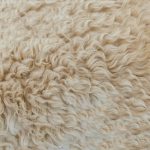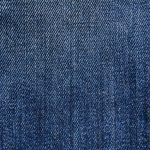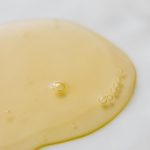Polyamide feels smooth and soft against your skin, offering a silky texture that’s more refined than cotton’s fibrous touch. You’ll notice it’s lightweight and slightly stretchy, so it moves with you without irritation. Its sleek surface reduces friction, making it comfortable for activewear and daily use. Plus, it retains shape and resists pilling, keeping your garments fresh longer. If you want to understand why this fabric suits so many clothing types, keep exploring its qualities and care tips.
Table of Contents
Key Takeaways
- Polyamide feels smooth and soft against the skin, offering a silky texture that is more refined than cotton’s fibrous feel.
- It provides a snug, comfortable fit with slight stretch, supporting movement without irritation or chafing.
- The fabric is lightweight and breathable but less so than natural fibers, making it ideal for activewear.
- Its smooth surface reduces friction, enhancing comfort during prolonged wear.
- Polyamide retains softness and shape well after washing, maintaining a fresh feel without pilling or roughness.
Overview of Polyamide as a Fabric
Polyamide, commonly known as nylon, offers a unique blend of strength and softness that makes it a popular fabric choice. When you wear polyamide, you’ll notice its durability—it resists wear and tear much better than many other fibers.
This fabric also dries quickly, making it ideal for activewear and outdoor gear. You’ll find polyamide used in everything from stockings to sportswear because it stretches comfortably while holding its shape.
It’s lightweight, so it won’t weigh you down, and it’s resistant to wrinkles and abrasions. Despite being synthetic, polyamide feels smooth against your skin, which adds to its appeal.
Understanding these qualities helps you appreciate why polyamide remains a versatile and reliable fabric in your wardrobe.
The Softness Level of Polyamide
You’ll notice polyamide feels smoother than cotton but isn’t quite as breathable on its own.
Its softness level changes when blended with other fabrics, affecting comfort and texture.
Let’s explore how these factors shape your experience with polyamide materials.
Smoothness Compared to Cotton
Although cotton has long been celebrated for its natural softness, you might be surprised by how smooth polyamide feels against your skin. Polyamide fibers have a sleek, almost silky texture that glides effortlessly. Compared to cotton’s slightly fibrous feel, polyamide offers a consistent smoothness, making it ideal for close-to-skin garments.
Here’s a quick comparison:
| Feature | Cotton | Polyamide |
|---|---|---|
| Surface Texture | Slightly fibrous | Silky and sleek |
| Feel on Skin | Soft but textured | Smooth and slippery |
| Smoothness Level | Moderate | High |
When you wear polyamide, expect a smoothness that’s less natural but more uniform than cotton’s gentle softness.
Breathability and Comfort
Feeling the smoothness of polyamide is just one part of the experience; how it breathes and sits against your skin plays a big role in comfort.
Polyamide fibers are designed to wick moisture away, keeping you dry during activity. However, compared to natural fibers like cotton, polyamide doesn’t breathe as freely, which might make you feel warmer in hot conditions.
You might notice the fabric clings slightly, providing a snug fit that supports your movements without irritation. If you’re sensitive to heat or prone to sweating, polyamide can feel less ventilated, but its lightweight nature helps reduce any heavy or sticky sensation.
Impact of Fabric Blends
Blending polyamide with other fibers can greatly change its softness and texture, giving you a range of options to suit your preferences.
When mixed with natural fibers like cotton or wool, polyamide adds durability while maintaining a softer, more breathable feel. You’ll notice the fabric feels less synthetic and more comfortable against your skin.
Blends with elastane provide stretch, making the material feel smoother and more flexible, perfect for activewear.
On the other hand, combining polyamide with silk or modal enhances softness and gives a luxurious, silky touch.
Depending on the blend ratio, the fabric can feel anywhere from sleek and smooth to plush and cozy.
Texture Characteristics of Polyamide
Polyamide fibers offer a smooth and resilient texture that many find appealing in both clothing and upholstery.
When you touch polyamide, you’ll notice its sleek surface feels soft yet firm, providing a comfortable sensation without being overly plush. Its fine, uniform structure lets the fabric glide effortlessly against your skin, reducing friction and irritation.
You’ll also find polyamide has a slight stretch, which adds to its flexibility and helps garments maintain shape. Despite its smoothness, polyamide resists pilling and wrinkles, so it stays looking fresh longer.
If you run your hand over polyamide, you’ll feel a subtle silkiness combined with durability, making it ideal for activewear or everyday pieces where softness and strength both matter.
Comparing Polyamide to Natural Fibers
While natural fibers like cotton and wool offer familiar comfort and breathability, you’ll find that polyamide brings unique advantages to the table.
When comparing polyamide to natural fibers, consider these key differences:
- Durability: Polyamide is more resistant to wear and tear, so your clothes last longer without losing shape.
- Moisture Management: Unlike cotton, polyamide wicks moisture away quickly, keeping you dry during active use.
- Texture: Polyamide feels smooth and slightly silky, whereas natural fibers like wool can sometimes feel coarse or itchy against sensitive skin.
Understanding these differences helps you choose the right fabric for your needs, balancing natural softness with polyamide’s performance benefits.
Common Uses of Polyamide in Clothing
You’ll find polyamide in many types of clothing because it’s lightweight and durable.
It’s popular in activewear and sportswear, where stretch and moisture-wicking matter.
You’ll also see it in lingerie, hosiery, and even outerwear like jackets for added comfort and protection.
Activewear and Sportswear
Because you need gear that moves with you and withstands intense activity, activewear and sportswear often rely on polyamide fibers.
Polyamide feels smooth and lightweight against your skin, making it ideal for workouts or sports. It offers excellent stretch and recovery, so your clothing stays comfortable and shape-retentive through movement. Plus, polyamide wicks moisture away quickly, keeping you dry and fresh.
Here’s why polyamide works well in your activewear:
- Durability: It resists abrasion and wear, handling frequent use and washing without losing softness.
- Breathability: It lets air circulate, preventing overheating during exercise.
- Quick-drying: It dries fast, so you stay comfortable even in sweaty conditions.
With polyamide, your sportswear feels soft and functional, supporting your performance effortlessly.
Lingerie and Hosiery
When you slip into lingerie or hosiery made with polyamide, you immediately notice its lightweight feel and gentle stretch.
Polyamide fibers hug your skin smoothly without causing irritation, offering a soft, almost silky texture. This fabric’s breathability keeps you comfortable throughout the day, while its elasticity guarantees a snug fit that moves with you.
You’ll appreciate how polyamide lingerie maintains its shape and resists sagging, giving you lasting support. In hosiery, polyamide creates a sheer, smooth finish that feels barely there yet provides durability against runs or tears.
Thanks to its moisture-wicking properties, polyamide also helps keep your skin dry and fresh. Overall, polyamide makes lingerie and hosiery feel luxurious and comfortable, enhancing your confidence with every wear.
Outerwear and Jackets
Polyamide plays a key role in outerwear and jackets, offering lightweight durability and excellent weather resistance. When you wear polyamide-based outerwear, you benefit from materials that aren’t only tough but also comfortable against your skin.
Here’s why you’ll appreciate polyamide in your jackets:
- Water Resistance: Polyamide repels moisture, keeping you dry during unexpected rain or snow.
- Breathability: Despite its protective qualities, it allows air to circulate, preventing overheating.
- Flexibility: The fabric moves with you, ensuring comfort whether you’re hiking or commuting.
These qualities make polyamide a smart choice for your outerwear, blending protection with comfort.
Tips for Caring for Polyamide Garments
Although synthetic fibers are generally durable, you’ll want to handle polyamide garments with care to maintain their softness and texture. Washing them in cold water and using mild detergent helps prevent damage. Avoid bleach and fabric softeners, as they can break down the fibers. Air drying is best, as high heat from dryers can shrink or weaken polyamide. Store your garments away from direct sunlight to avoid fading.
| Care Tip | Why It Matters |
|---|---|
| Wash Cold | Preserves fiber strength |
| Use Mild Detergent | Prevents fabric breakdown |
| Avoid Bleach | Maintains color and texture |
| Air Dry | Prevents shrinkage and damage |
| Store Away from Sun | Avoids fading and fiber wear |
Frequently Asked Questions
Is Polyamide Fabric Hypoallergenic for Sensitive Skin?
When it comes to sensitive skin, polyamide can be a mixed bag. It’s generally hypoallergenic but may irritate some people. You’ll want to test it first because one size doesn’t fit all when it comes to allergies.
How Does Polyamide React to Sweat and Moisture?
When you sweat, polyamide wicks moisture away quickly, keeping you dry and comfortable. It dries fast and resists odor buildup, so you won’t feel sticky or clammy during workouts or hot days.
Can Polyamide Fabrics Cause Static Electricity?
Static shocks sometimes sneak up when you wear polyamide fabrics. Since polyamide is a synthetic fiber, it can create clingy charges, especially in dry conditions. To stop static, you can use fabric softeners or humidifiers.
Is Polyamide Environmentally Friendly or Recyclable?
You’ll find polyamide isn’t very eco-friendly since it’s petroleum-based and takes ages to decompose. However, you can recycle it through specialized programs, which helps reduce waste and supports more sustainable fabric use.
How Long Does Polyamide Clothing Typically Last?
You can expect polyamide clothing to last several years with proper care. It resists wear and tear well, but avoid excessive heat and harsh detergents to keep your garments durable and looking great longer.
- What Is Gore-Tex Active? A Guide to the Lightweight Fabric - July 1, 2025
- What Is Gore-Tex Active? A Guide to the Lightweight Fabric - July 1, 2025
- What Is Gore-Tex Active? A Guide to the Lightweight Fabric - July 1, 2025







